





Mary Honeyman Ten Eyck Turner




First Regent, Llano Estacado Chapter now called the Molly Goodnight Chapter National Society, Daughters of the American Revolution







Arrival in Amarillo 1902 and Life on These High Plains Avery Turner and the Expansion of the Railroad
A Distinguished Legacy: National Society, Daughters of the American Revolution Family Recollections



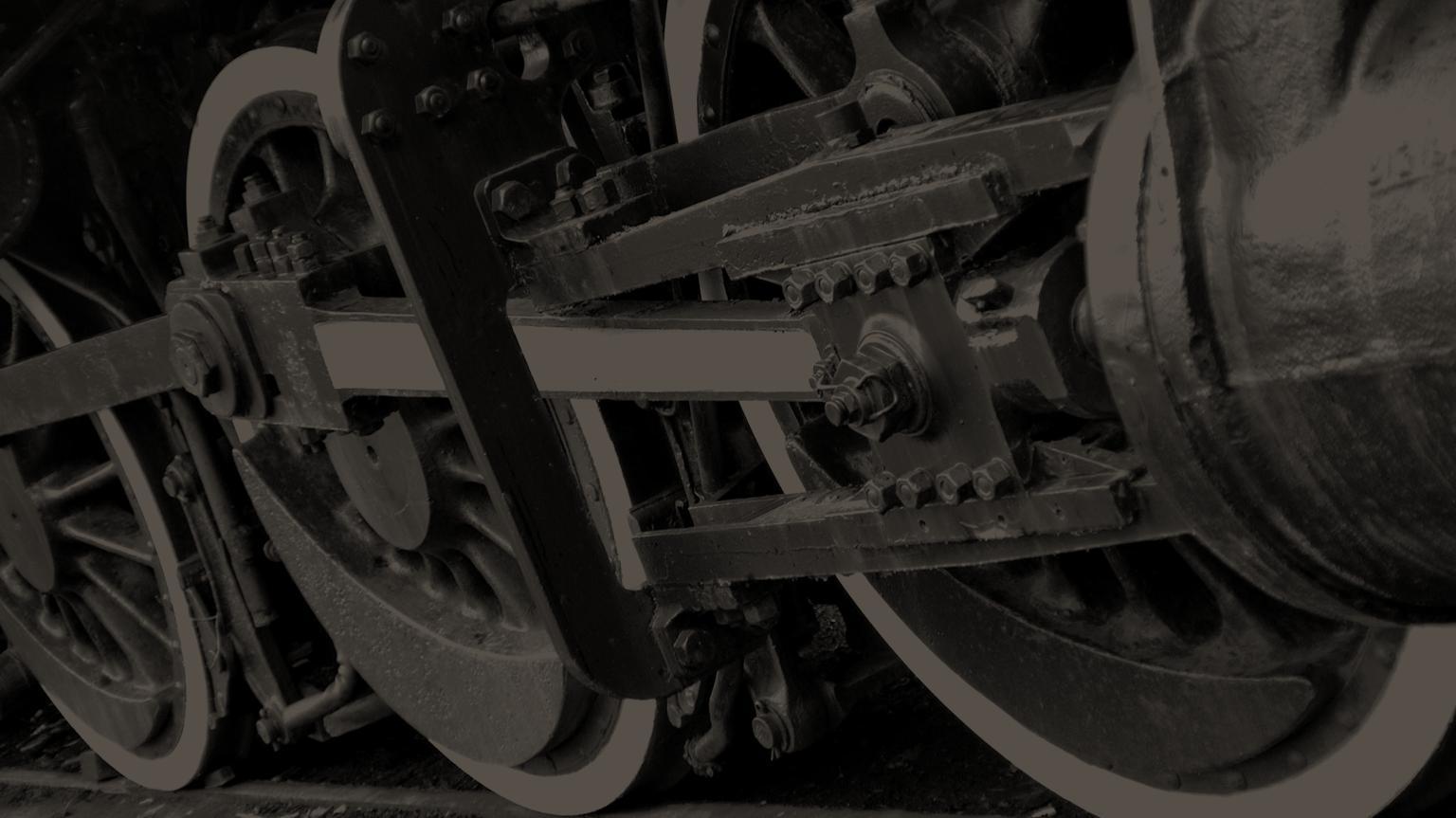









“Rancher Charles Goodnight entered the Canadian River Valley in 1876. Other big outfits followed the legendary cowman into the Panhandle in the 1870s and 1880s, such as the Prairie Cattle Company, the XIT, the Frying Pan Ranch and the LX Ranch.
Railroad executives, intrigued by the convergence of several cattle trails near Wild Horse Lake, decided to build a line to the area. A tent city named Ragtown, consisting of saloons, whorehouses and gambling halls to attract railroad workers, grew up along Amarillo Creek. Before long, newspapers were referring to Ragtown as Amarillo.
From such inauspicious beginnings, the little cow town grew into the Queen City of the Texas Panhandle. Amarillo celebrates its Western heritage with an abundance of museums and activities.”



True West Magazine, “Ragtown to Riches” (2014)







“We were living in Chicago at the time.

Mr. Turner was in charge of the Eastern Division of the Santa Fe Road. I had never heard of Amarillo, so knew nothing about it. But I soon found out.”




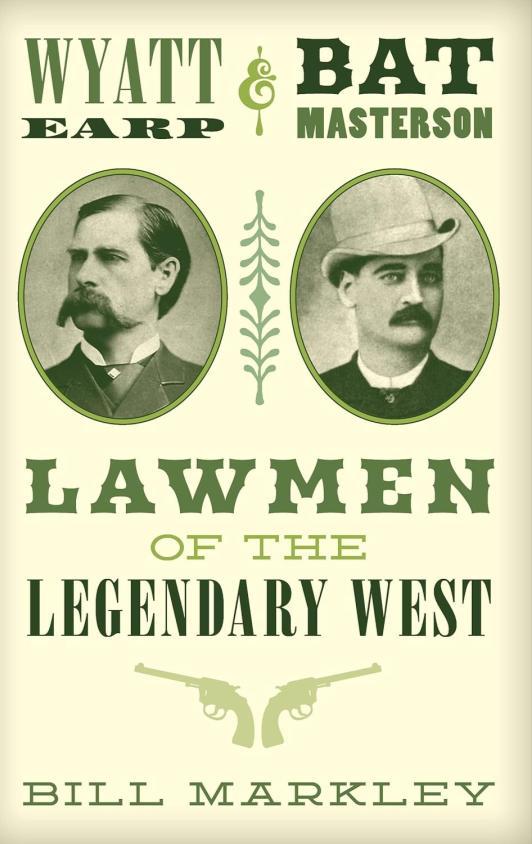


Amazon.com
“It was the privilege of my husband and myself to be invited guests in the old ranch home of Colonel and Mrs. Goodnight, in the early part of the century, soon after our arrival on these High Plains. It was our invitation to ranch life. There were no finer or more kindly people in the country.”
“While blazing the trail through the West, Mr. Turner had many and varied experiences with the early day characters. He knew Bat Masterson and Wyatt Earp when they were town marshals at Dodge City. I have often heard him speak of their fine characters and nerves of steel.”








“With the settlers came the conveniences. Electric lights, telephones and manufactured gas were our first blessings. A limited amount of sidewalks, to replace the step up and step down platforms in front of the stores, were hailed a delight …. The new Santa Fe Station wiped out the “Bowery,” opposite the old one, a street of saloons and tough characters. A herd law rounded up the stock roaming over the streets. And women ceased wearing Mother Hubbards around town, topped by sunbonnets. Diamond earrings [were] a common occurrence, for most cattlemen’s wives were long on diamonds.”









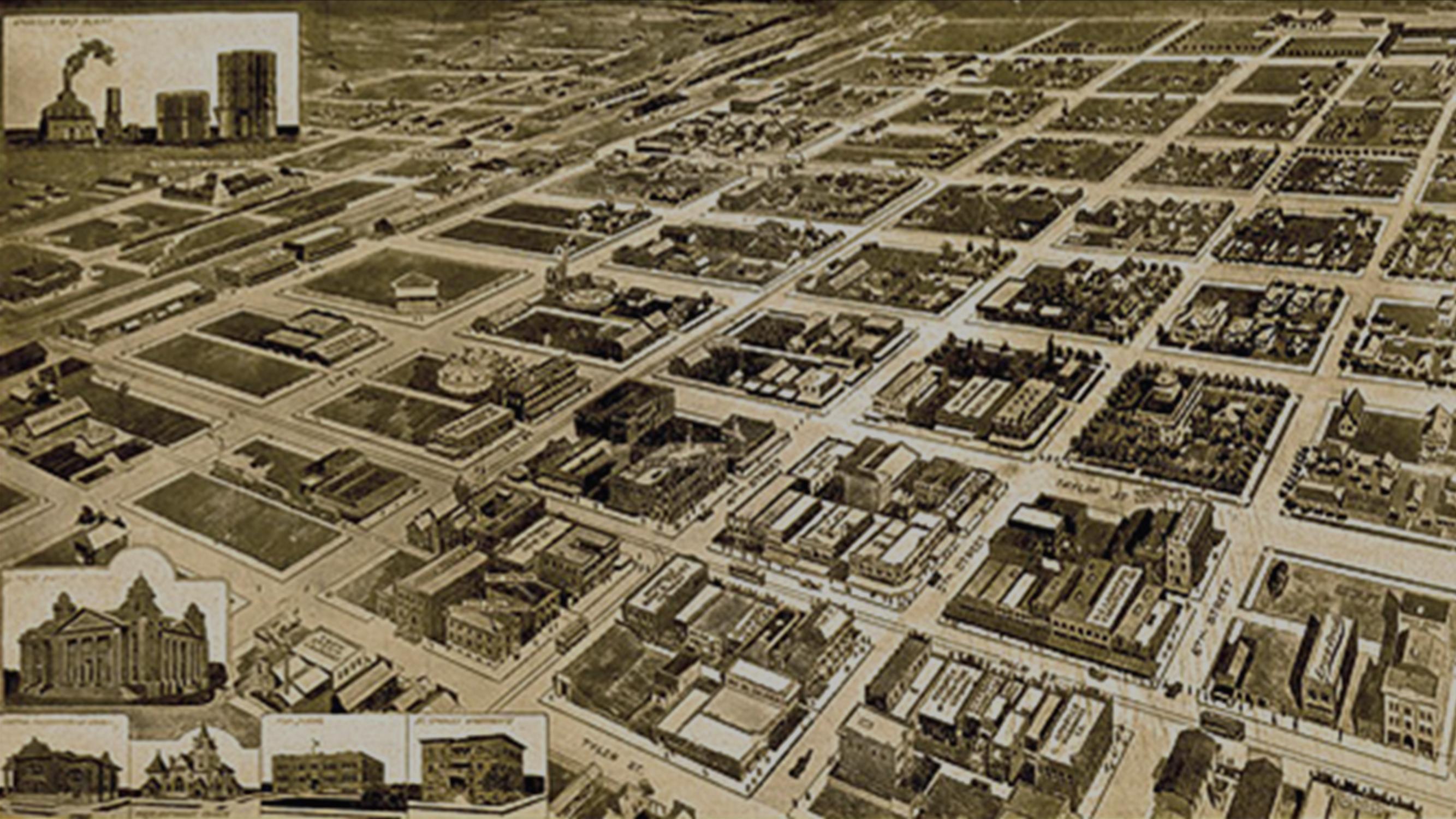





“My neighbors of thirty years are God’s Chosen People.”


“Frequent trips away, helped to make living possible. The constant changes and meeting new people made me forget the past and gradually come to love these High Plains. Now I regard it as a privilege to have been a pioneer and to possess long, lasting friendships with the finest people I have ever known.”










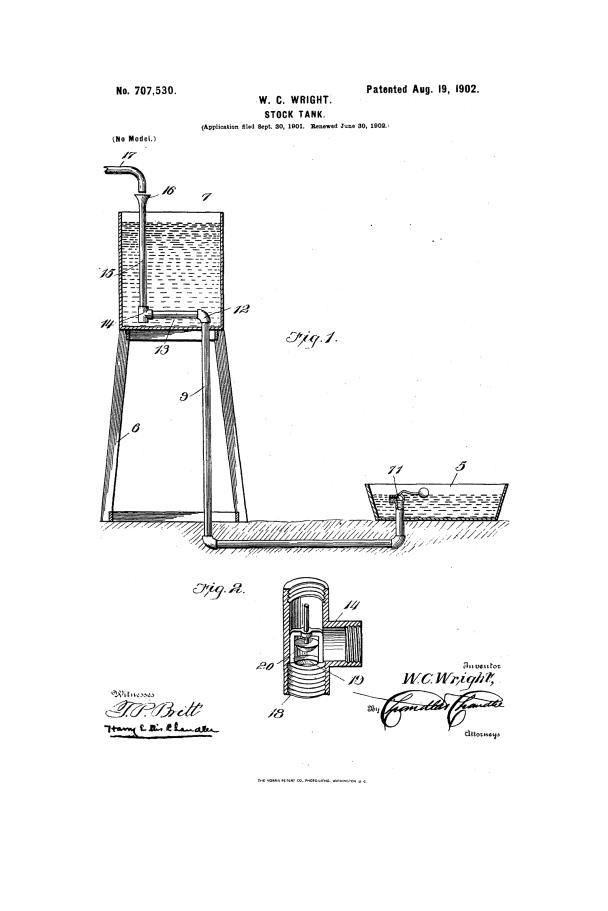


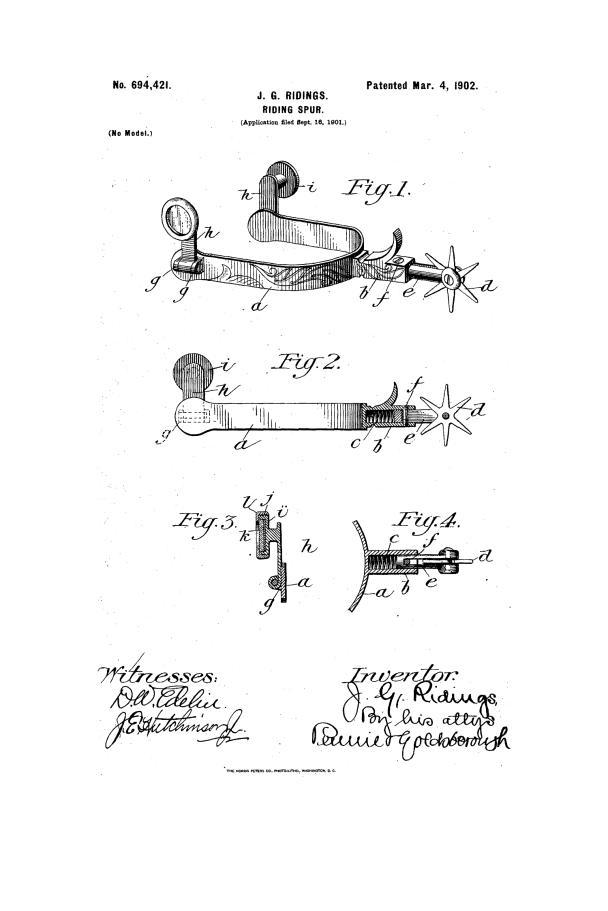

Inventions in 1902, Amarillo, Texas, The Portal to Texas History
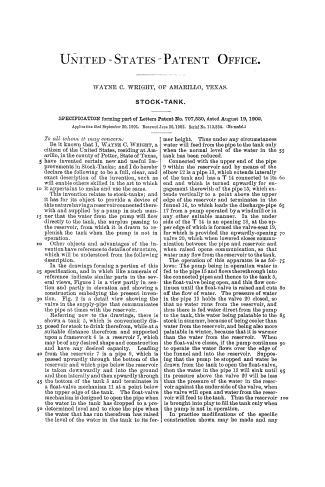


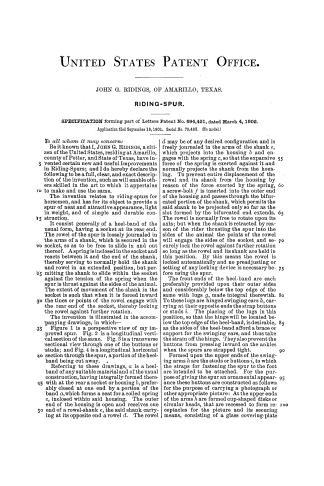

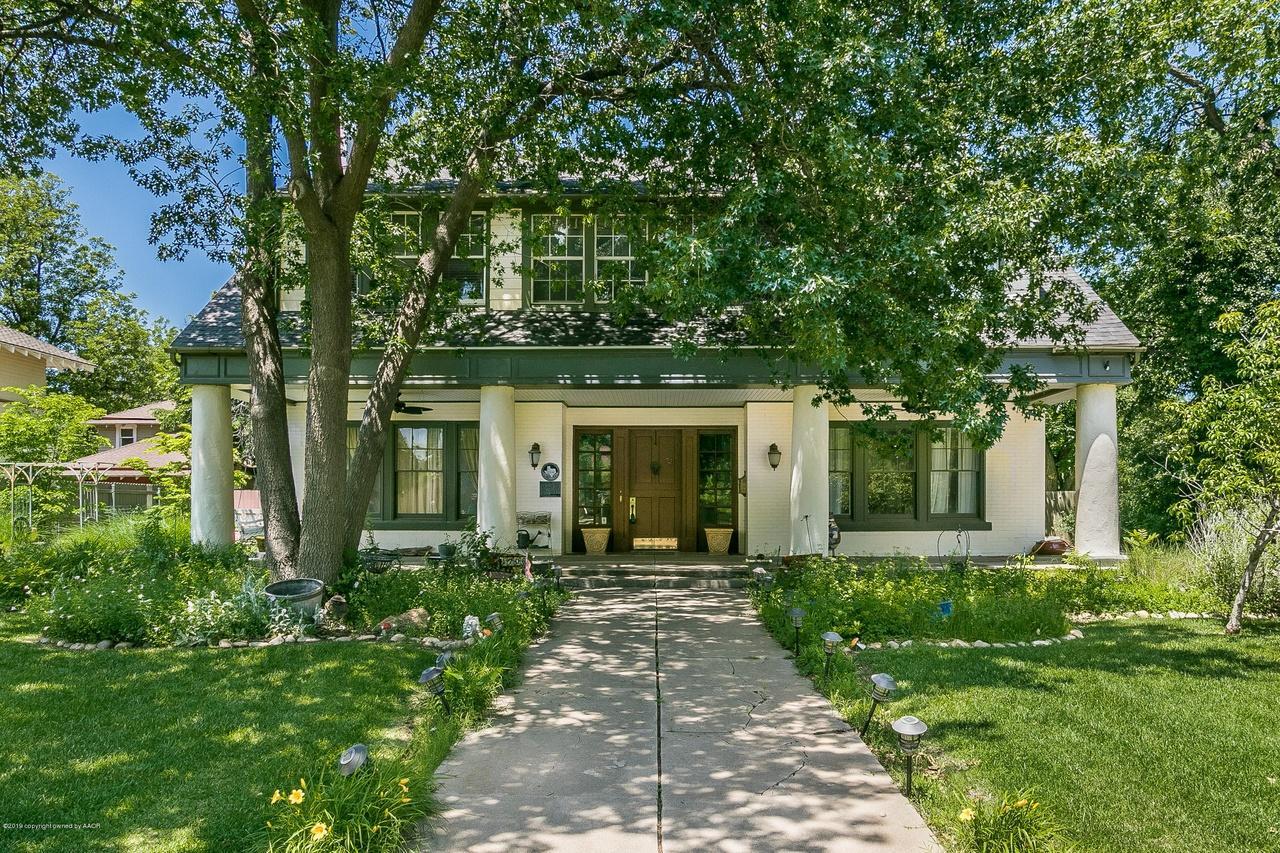














“In 1910, the Turners built this home modeled after Mary’s parents’ home in New Jersey …. One of Amarillo’s very few Dutch colonial revival homes, this two story side gable brick house has a full width porch with massive Tuscan columns and a large shed roof dormer. An original brick carriage house later became a guest cottage.”

Texas Historical Commission Marker

2011 (5507016993)







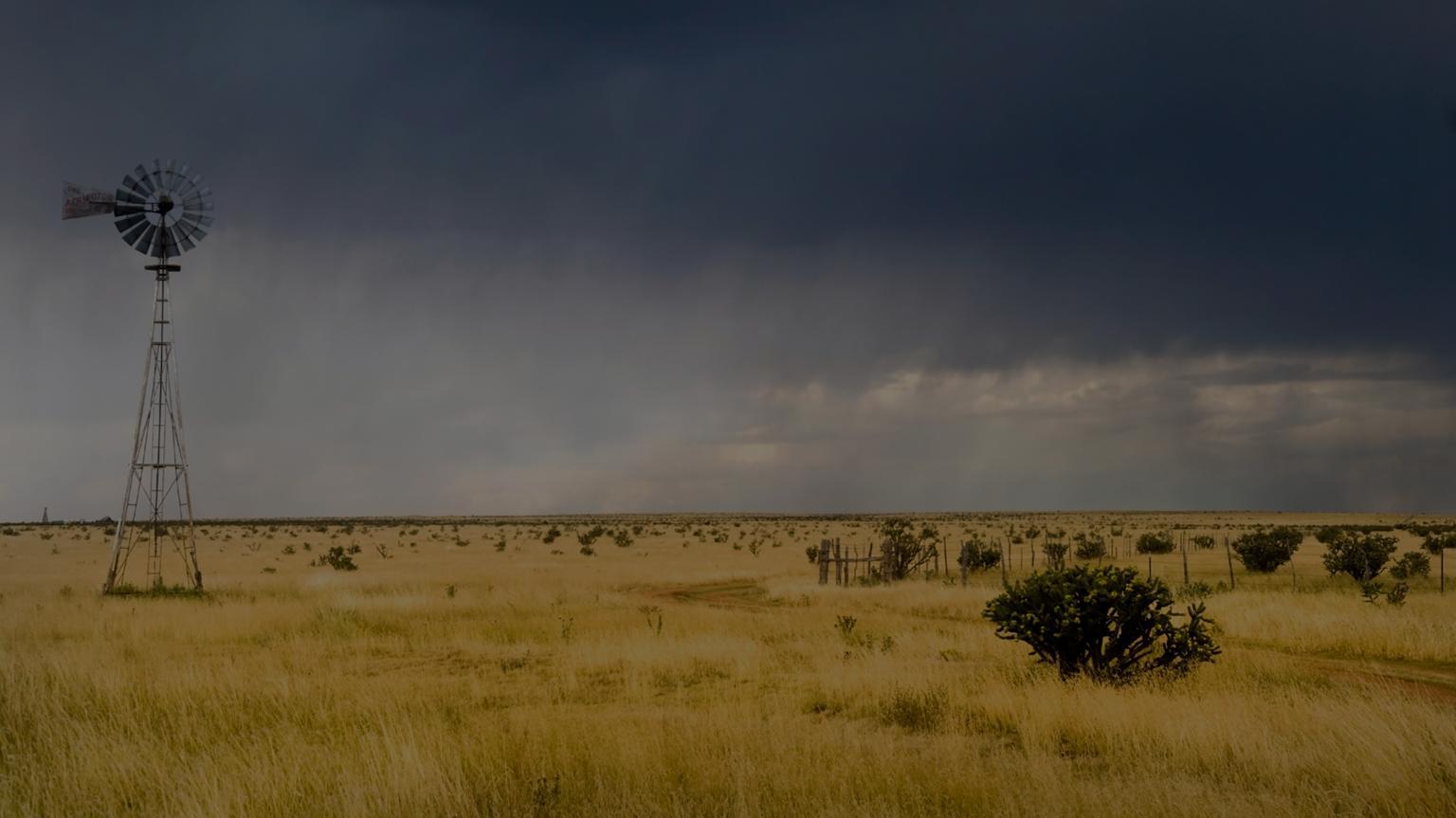

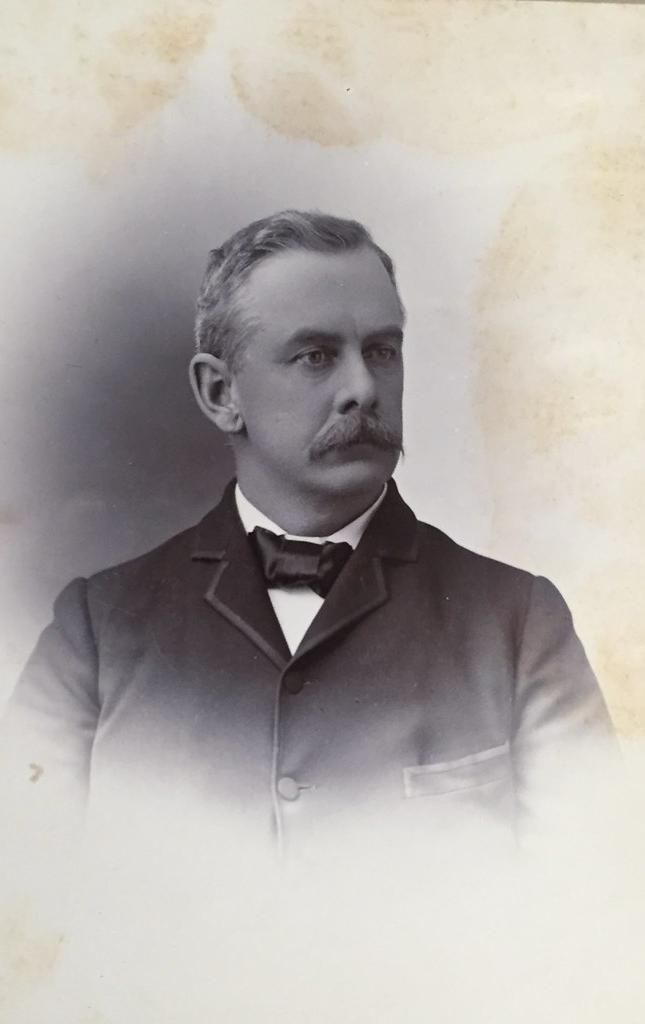



• After college at Cornell, Avery began his career with the Santa Fe on May 25, 1875







• Avery was the first man to ride a train into New Mexico over Raton Pass. He brought the first passenger train to Santa Fe, New Mexico in 1880. His railroad eventually became BNSF Railway




• Married Mary Honeyman Ten Eyck at Topeka, Kansas in 1886 and continued his distinguished career in the railroad business they were a terrific team!
















• Elected Vice President and General Manager of the Pecos Valley lines in 1902 and he was sent to Amarillo to extend the Santa Fe System over the South Plains



• First President of the Amarillo Country Club (1919)


• He became known as, “Uncle Avery,” “Mr. Santa Fe,” and the “Grand Old Man of the Santa Fe”



• “Avery was a man, a real, man. And then he was a gentleman and a high type a citizen as ever blessed any community.” The Amarillo Globe Times (1933)
















A
Distinguished Legacy: National Society, Daughters of the American Revolution


DAR Ritual

“Yea, I have a goodly heritage.” Psalms 16:6 King James Bible











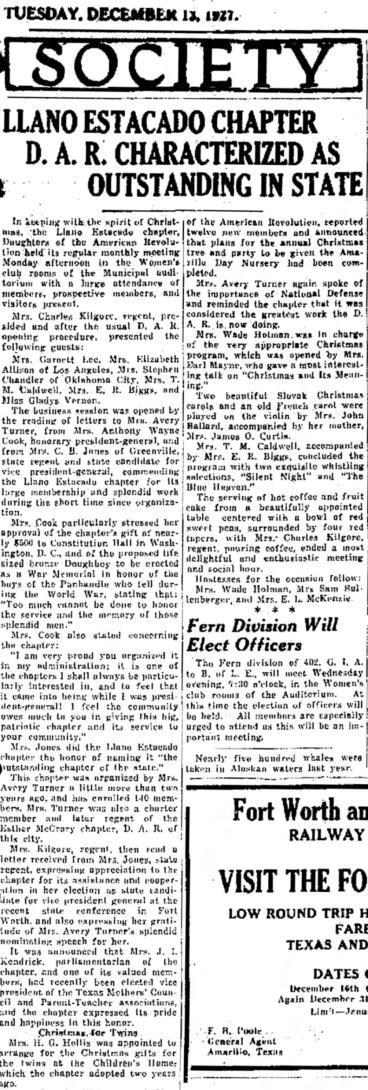







“Mrs. Turner Receives New D. A. R. Chapter,” The Amarillo Globe Times 1924 | Miles Standish Chapter | The Esther McCrory Chapter was est. 1911.


Minnie is mentioned as attending meetings in newspaper articles back then, and another article notes she helped organized the John Alden Chapter as well …

“Proposed New Chapter D. A. R.,” The Amarillo Globe Times, 1925










“Llano Estacado Chapter D. A. R. Characterized as Outstanding in State,” The Amarillo Globe Times 1927




“Llano Estacado Chapter, D. A. R. in Interesting First Meeting of Year,” The Amarillo Globe-Times, 1928 (Aunt Mary chosen as one of three delegates to attend annual state convention in Galveston), and “Mrs. Avery Turner Goes to Conference” (Santa Fe, New Mexico to attend the New Mexico State Conference of D. A. R.)



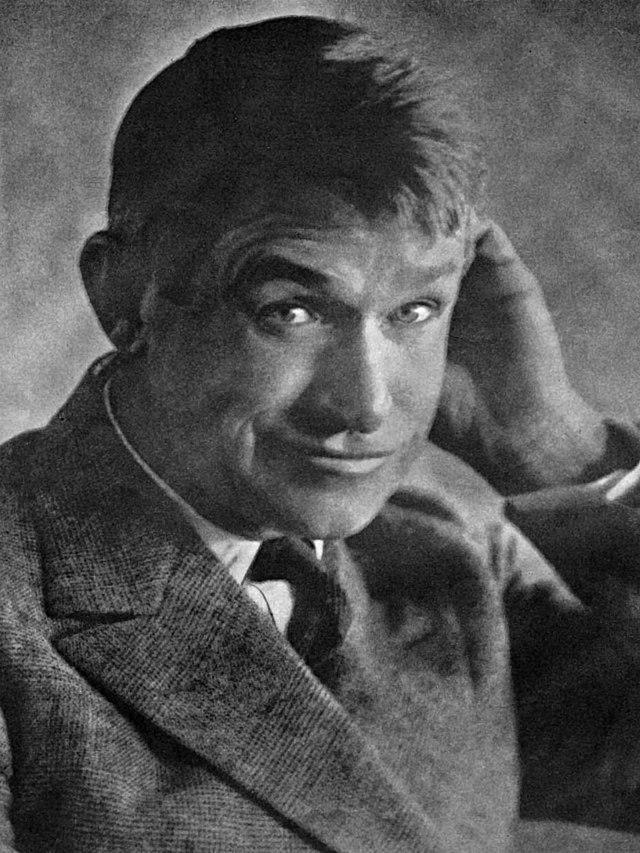




“An incident occurred, in Washington, D.C., just before the tragic death of Will Rogers, the 15 of August, 1935, that has left a great impression on me. While attending the Continental Congress of the Daughters of the American Revolution, very unexpectedly Will Rogers appeared on the platform bedecked with a wide D. A. R. ribbon across his shoulders and masses of flowers in his arms, in imitation of the Society. Of course he brought down the house.”






“These High Plains” (1941)




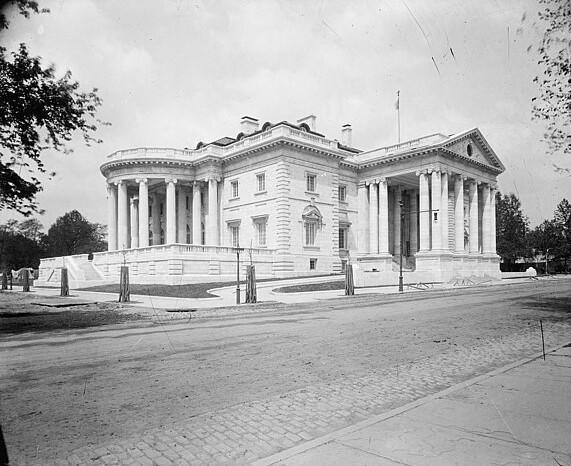


Wikimedia Commons

to 1939

“A total of 225,000 trees, 240,767 shrubs and perennials, 6,528 rose bushes and 60,721 bulbs were planted. Your chairman offered a medal to the state planting the most trees, but after consideration and the privilege of changing her mind, she decided to give a cash gift of $25 for conservation work.
This has been won by Georgia, 93 chapters planted 50,507 trees. New York wins honorable mention …”



Mary Honeyman Ten Eyck Turner, 1936

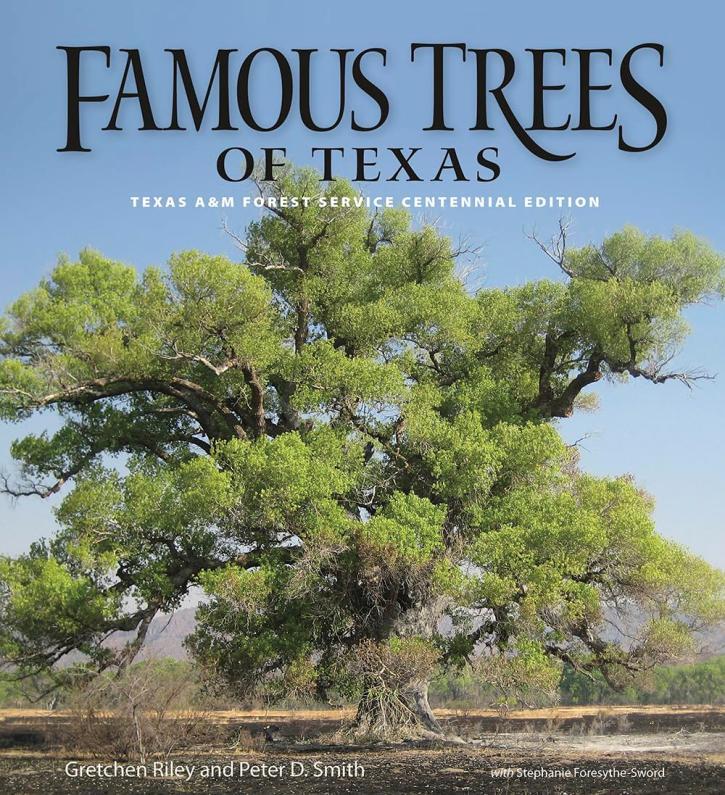


The Washington Post August 16, 1936

“D. A. R. to Act On Conservation of U.S. Youth | Mrs. Avery Turner, the National Chairman Heads Plan.”



The article discusses national conservation efforts and a prize to be awarded to the State befriending the most boys and girls toward this end. “Preservation of trees and wild flower sanctuaries and a bird, tree and flower emblem for each State is advocated.” Texas A&M Forest Service Amazon.com















“Mrs. Avery Turner Speaks at National DAR Meeting,” The Amarillo Globe Times, 1937 | Local newspaper article discusses efforts to preserve the Carl Inn Grove of sugar pine trees next to Yosemite National Park

“At the suggestion of our Government we have launched the ‘Penny Pine’ project, which means two pennies for a pine,” report by Mary Honeyman Ten Eyck Turner during DAR’s 47 Congressional Congress, 1938 in Washington, D.C.













“Eagle Slandered,” Christian Science Monitor, 1938 | Concerning a Hollywood movie showing an eagle carrying away a child. “Mrs. Turner of the DAR Conservation Committee issued a complaint .…”



“Rescued from an Eagle’s Nest,” 1908, Directed by J. Searle Dawley, Produced by Edison Studios (eagle appears at 1:20). You can watch on YouTube!








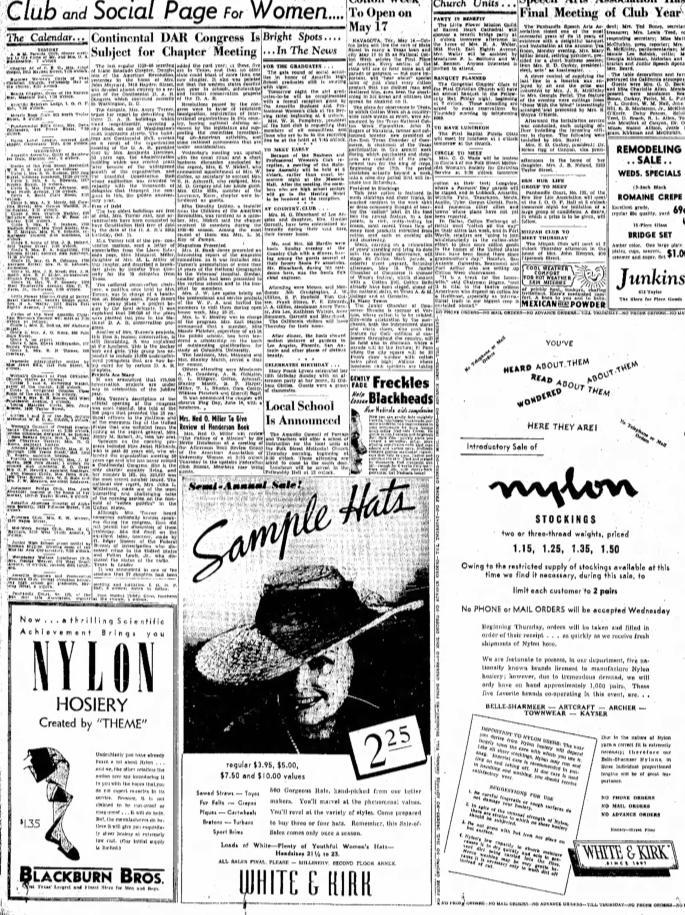


“Sonny Boy Welch Is Guest Violinist for DAR Program,” The Amarillo Globe Times, 1940





“Mrs. E. V. Nickell, regent, and Mrs. Avery Turner presented excellent reports of the recent state D. A. R. Conference they attended in Denton. Mrs. Turner was introduced at the convention as the organizer of the Llano Estacado Chapter with the largest charter membership of any chapter in the United States.” It was also noted in the article that she had attended almost every state D. A. R. conference since 1911.



Community Activities



• Chair of the local European Relief Council for the American Relief Administration, and the Polish Relief Fund, 1920




• Article by Mrs. Avery Turner, “The Boy Scouts,” The Amarillo Globe Times, 1929 | Voicing concern about the Reds (aka, Communists) infiltrating the BSA




• American Legion invites the Llano Estacado Chapter to meet, Mrs. Avery Turner speaks about “National Defense,” 1929


• In the Amarillo Daily News, “Llano Estacado DAR Opens New Season In Jones Home,” 1941, it is noted: “Mrs. Avery Turner, organizing regent, is national vice chairman of Red Cross for D. A. R. in the Southwest Division.” Her obituary mentions her being recognized by President Woodrow Wilson at the end of WWI


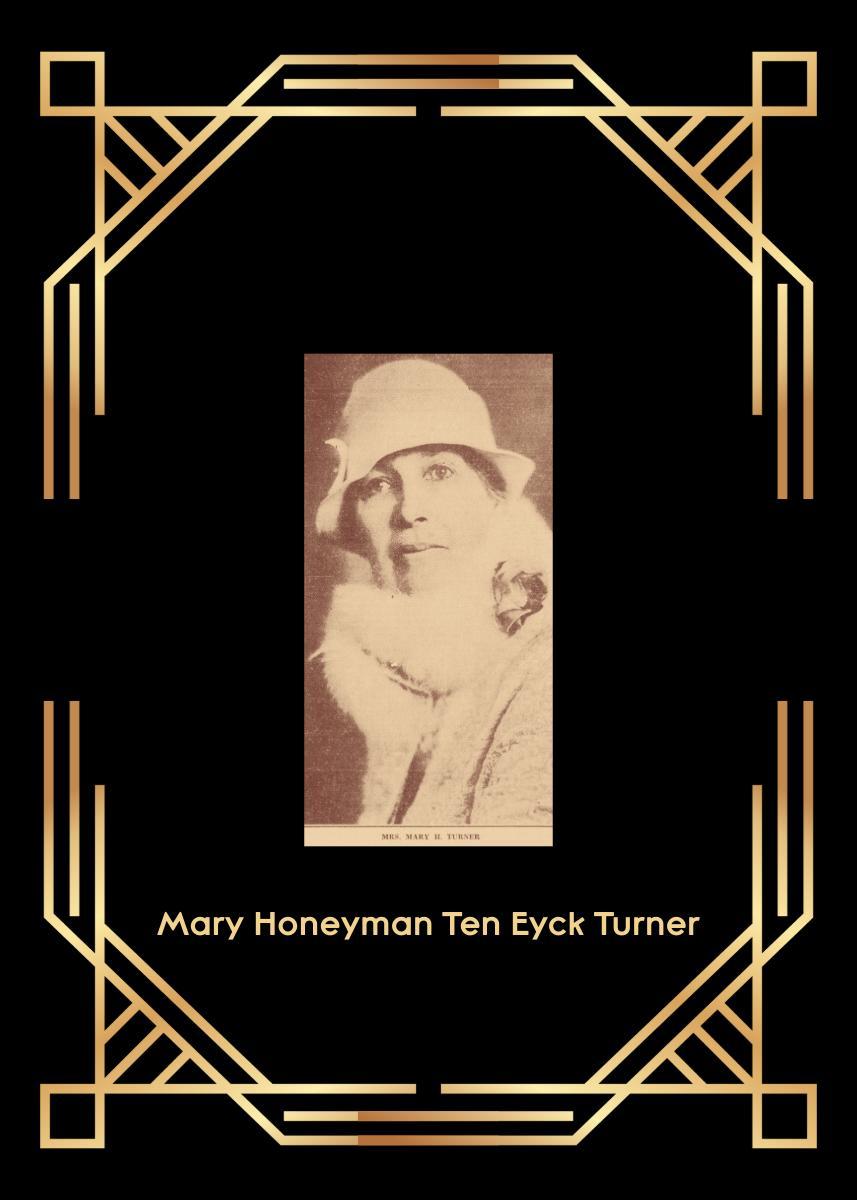







• “Mrs. Avery Turner Gives $1,000 to Army Home,” the Amarillo Globe Times, 1937 | The equivalent of $1,000 today is $22,000 (total project cost in 1937 was $5,000)







• In her 1951 obituary in the Amarillo Globe News Sunday newspaper it was recalled:

Turner Citadel of the Salvation Army here was named in her honor. Mrs. Turner was a member of the Army’s advisory board here for more than a quarter of a century and she was active in the support of its good works.












“Whereas, Mrs. Mary H. Turner has been a member of the Advisory Board of the Salvation Army in the City of Amarillo for 18 years, a longer period than any other person has ever served in such capacity; and

Whereas, during these years her wise counsel and kindly advice have been of incalculable value to the Salvation Army in meeting its many problems and carrying on its work; and
Whereas, the interest and untiring efforts of so cultured a lady are an inspiration to our workers and a challenge to all who love humanity; and



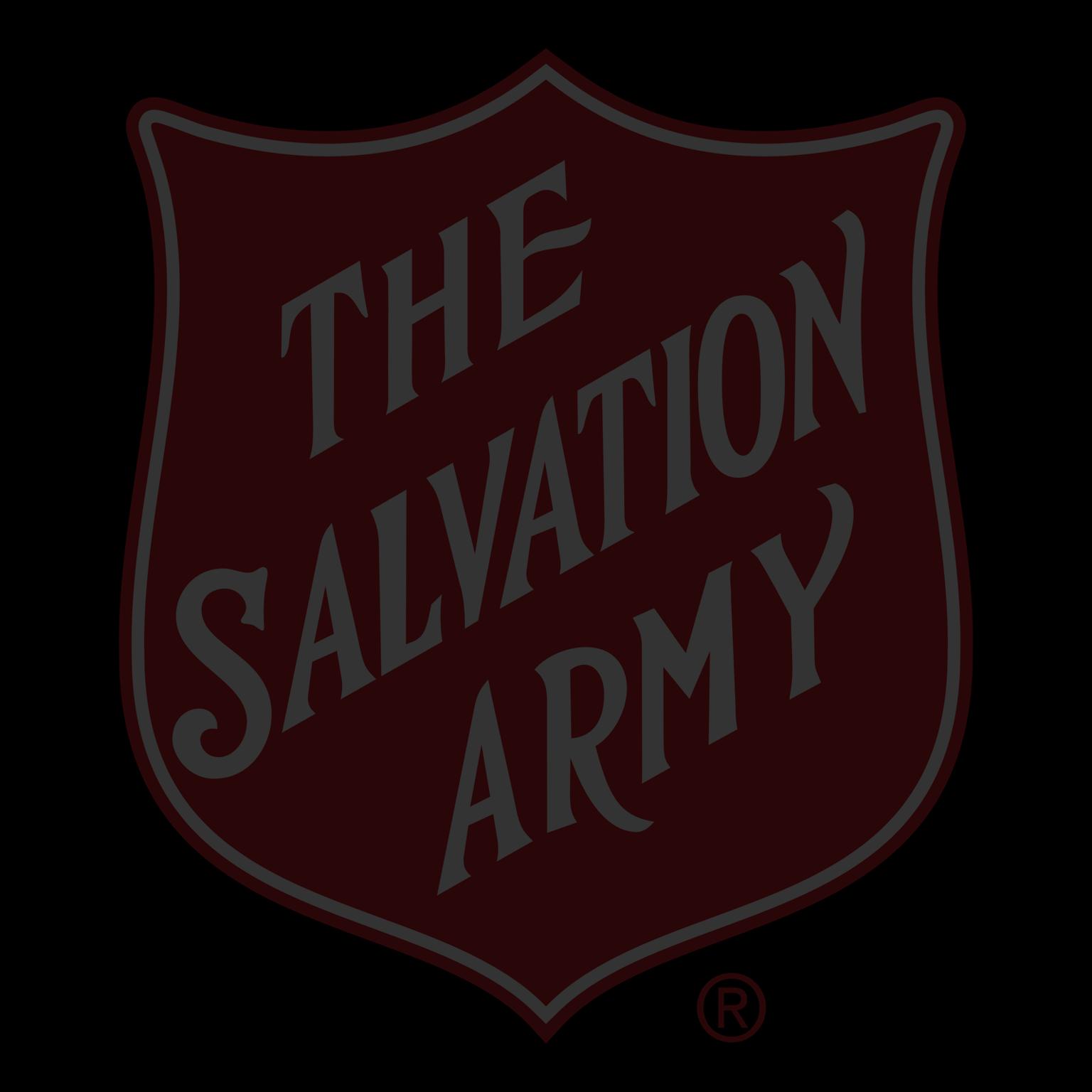
Whereas, her lamented husband, Avery Turner, was, during his lifetime, in thorough sympathy with the aims and purpose of the Salvation Army, and thoroughly approved of the interest taken in said organization by his wife, the said Mary H. Turner, and was one of its most generous supporters;
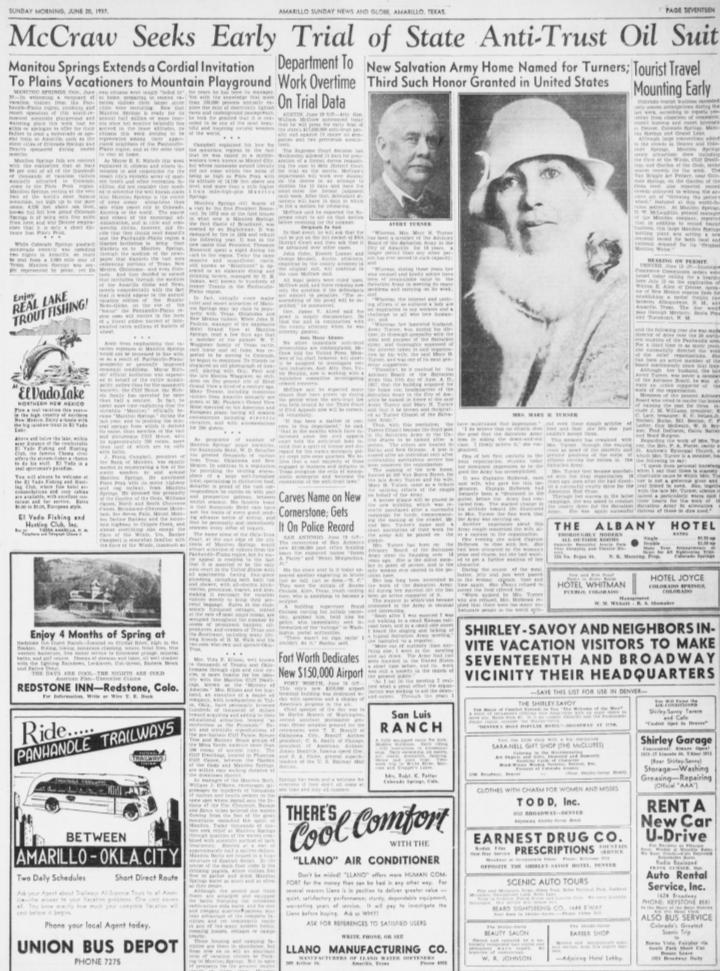










“Therefore, be it resolved by the Advisory Board of the Salvation Army this 15th day of June, A.D., 1937, that the building acquired for the home and headquarters of the Salvation Army in the City of Amarillo be named in honor of the said Avery Turner and Mary H. Turner and that it be known and designated as Turner Citadel of the Salvation Army.”










• “Amarillo Woman Aids Museum,” Amarillo Daily News, 1945 | She gave $1,000, the quivalent of $17,700 today, to the “Plains Museum.” The project’s cost in 1945 was $60,000.






“This sum will be used in completing a two story annex to the museum …. The building is on the West Texas State College campus.” Further, “Mrs. Turner and her husband, the late Avery Turner, came to the Panhandle as a young married couple …. They became interested in the Panhandle-Plains Historical Society when it was first organized and made many contributions to its work.”




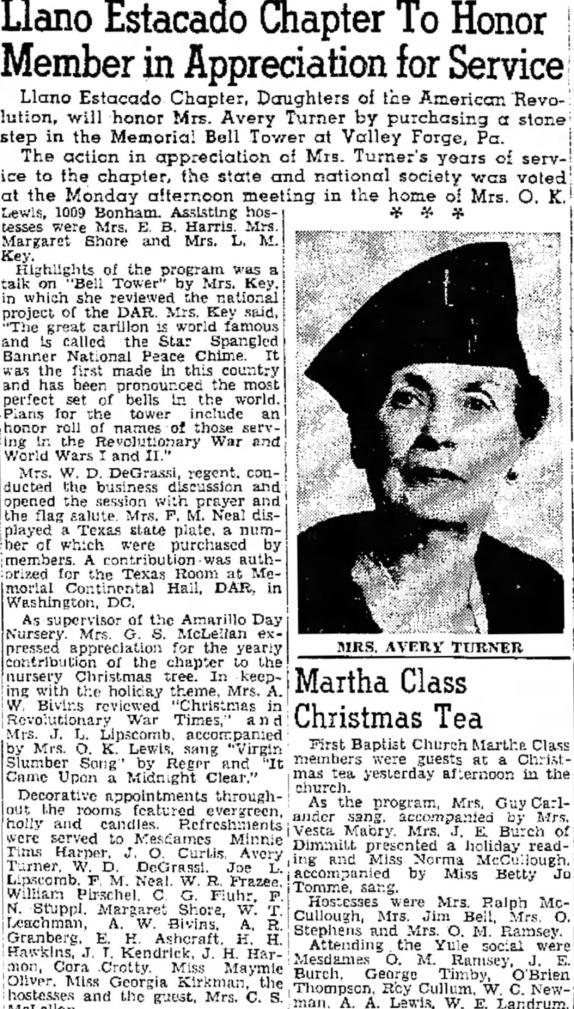







“Bond Gift Is Presented to D. A. R. Unit,” The Amarillo Globe News, 1942: “Mrs. Avery Turner, in the name of the Llano Estacado Chapter of the Daughters of the American Revolution, pledged to buy $3,000 in war bonds at the recent centennial congress of the National Society, D. A. R. in Chicago.” | $3,000 in 1942 is valued at $60,701 today.







Llano Estacado Chapter To Honor Member in Appreciation for Service,” The Amarillo Globe Times, 1948: “… by purchasing a stone step at the Memorial Bell Tower at Valley Forge, Pa. in appreciation of Mrs. Turner’s years of service to the chapter, the state and national society was voted at the Monday afternoon meeting.”







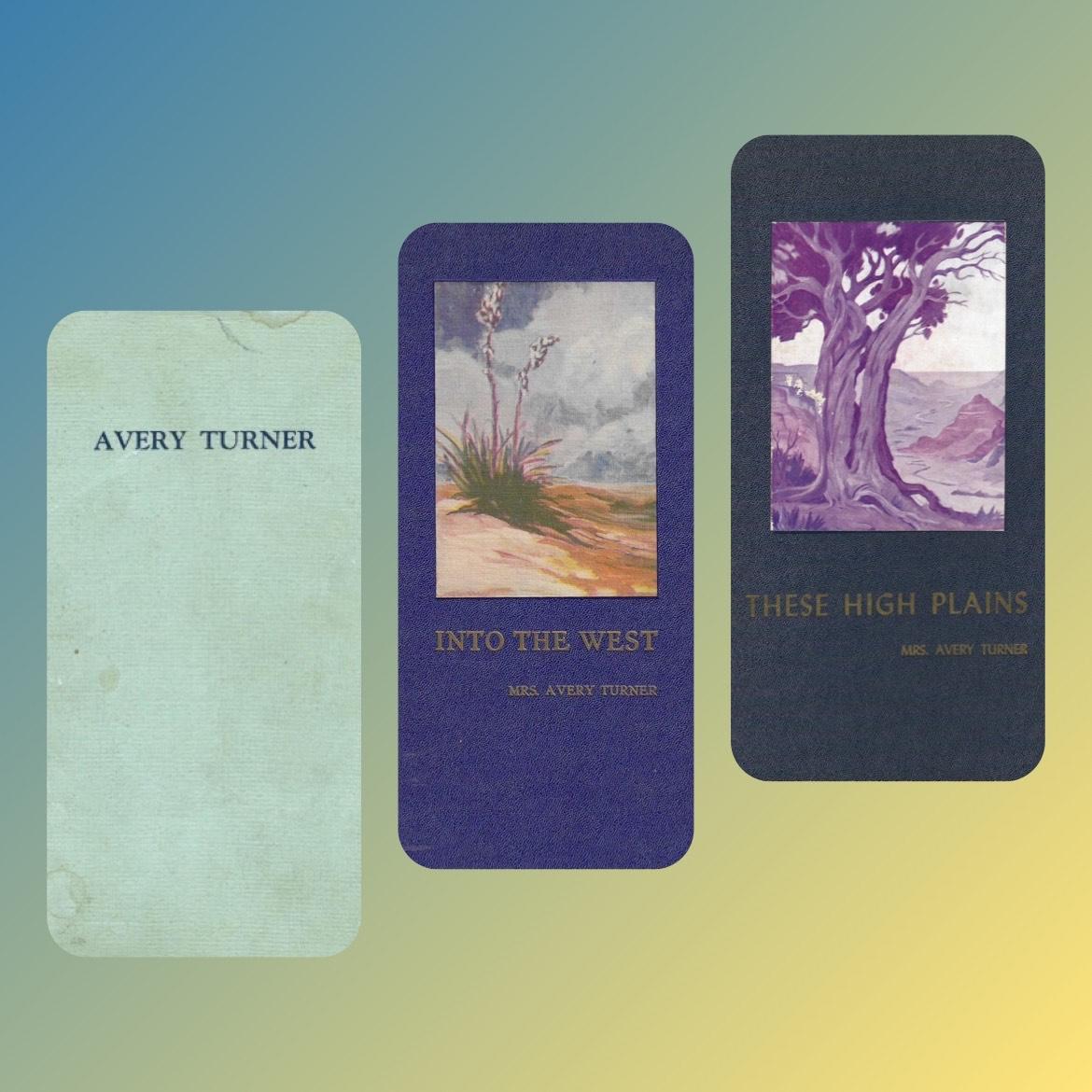



Avery Turner: Pioneer Railroad and Empire Builder of the Great Southwest, Southwestern Printing Company, Amarillo, 1933


Into The West, Russell Stationery Co., Amarillo, 1938



These High Plains, Russell Stationery Co., Amarillo, 1941




Panhandle Plains Historical Museum



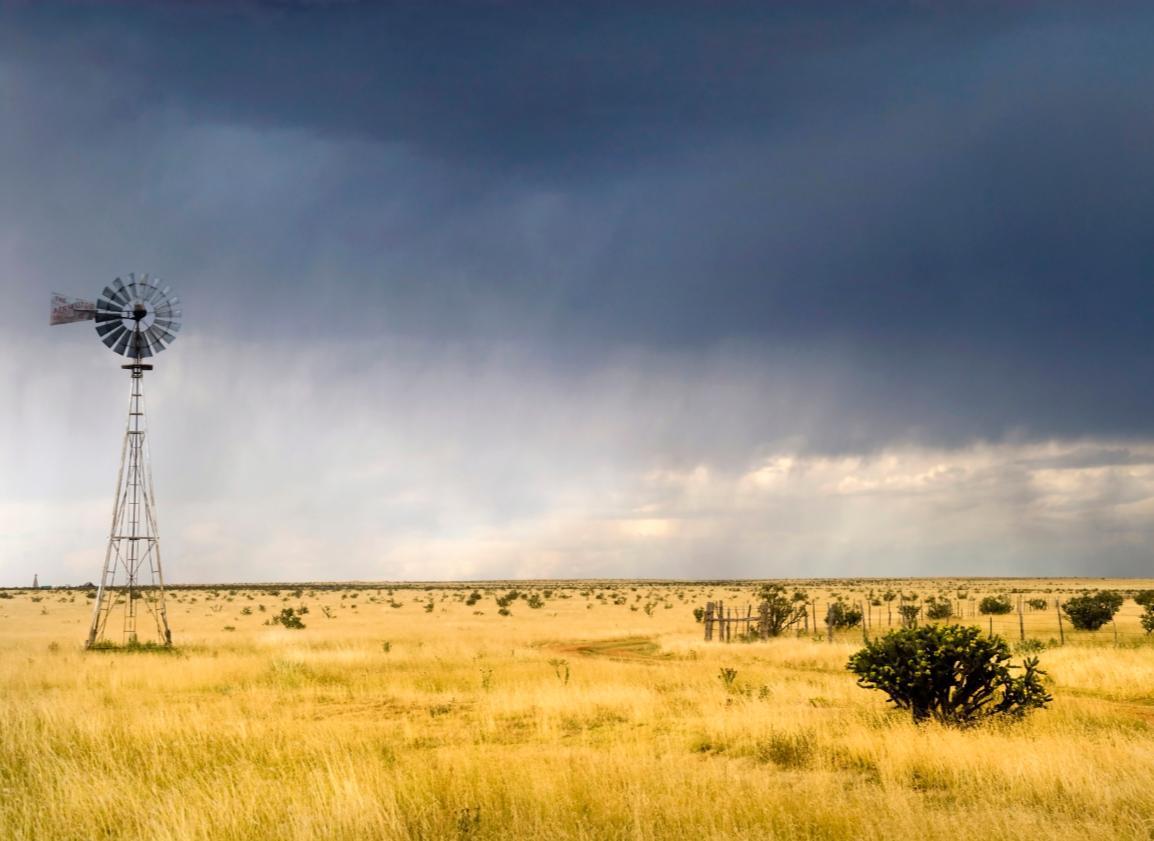

“These High Plains”

We love these Plains, so vast and high
That never seem to end

Except to meet the bright blue sky

That Heaven wills to send.

No rocks or rills or streams or lakes


But just this wondrous view

That atmosphere with sunshine makes.

All this and Heaven, too.






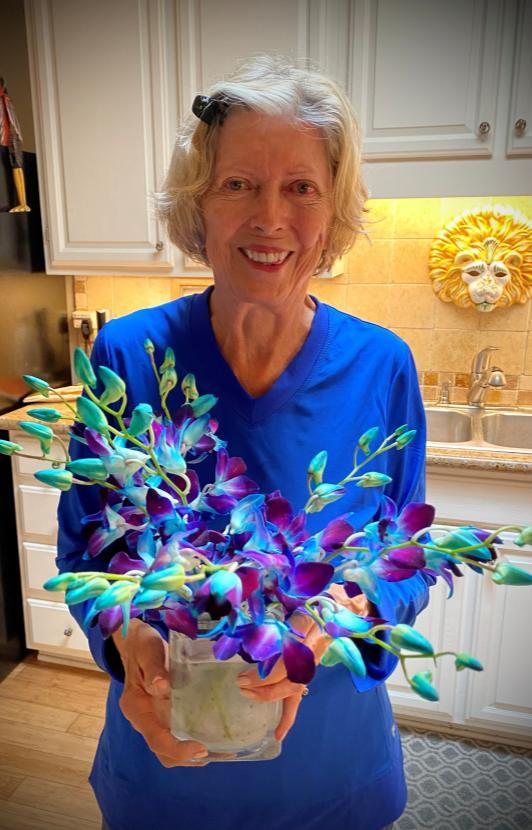


“I remember living with Aunt Mary in the 1940s. My father passed away in 1948, and my mother and I moved into the home on Polk Street. When Aunt Mary passed in 1951, the house was bequeathed to my mother, and we lived there for several years.”





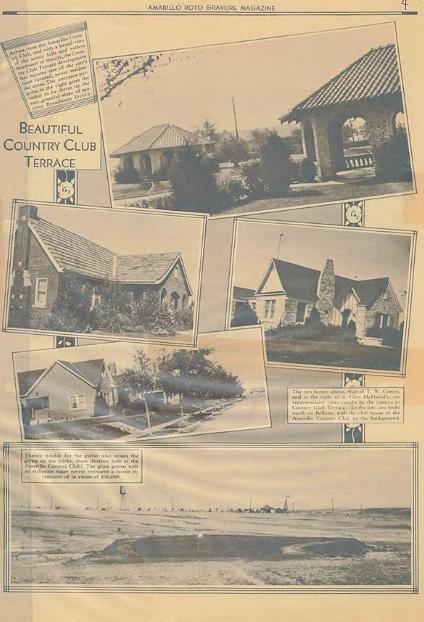






“Avery Turner was the first President of the Amarillo Country Club. Aunt Mary enjoyed playing golf there. In fact, she gave a trophy to the Club in 1935 for women golfers (18 hole play). You might enjoy, “Mrs. Turner’s Golf Pairings,” Amarillo Daily News in 1941.

Aunt Mary was fearless. She was known for playing golf on the Club’s modestly cultivated terrain, and if she came upon a rattlesnake, she would simply dispatch it with her club and keep going. Nothing stopped her.”




My late father David used to say that when his family traveled from Santa Fe to visit the Turners in Amarillo, it was a formal occasion. He and his sister had to be on their best behavior. Aunt Mary, as he called her, was devoted to her family and she was very generous with them.

Aunt Mary was a pioneer in many ways. She was proud to be the first woman in Amarillo to obtain a driver’s license!



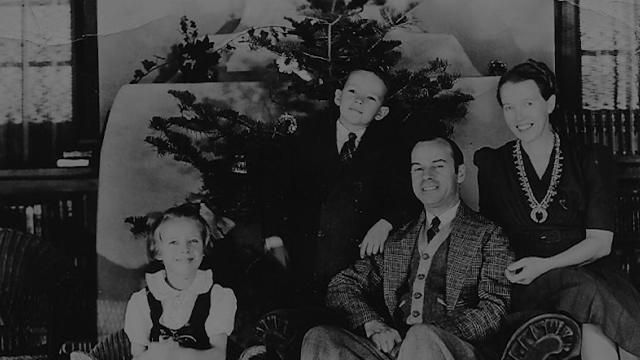


Aunt Mary remained in constant contact with David’s grandfather, R. Clarence Ten Eyck of Santa Fe, New Mexico, her brother and close confidant. Clarence was a business partner of Avery Turner’s. Clarence had two children, a son (David’s uncle) and a daughter (David’s mother). Clarence’s son was a bit rambunctious as a youth. Aunt Mary semi adopted him, and Uncle Harold Ten Eyck moved to Amarillo to live with the Turners for many years. He became an engineer and distinguished WWII veteran.




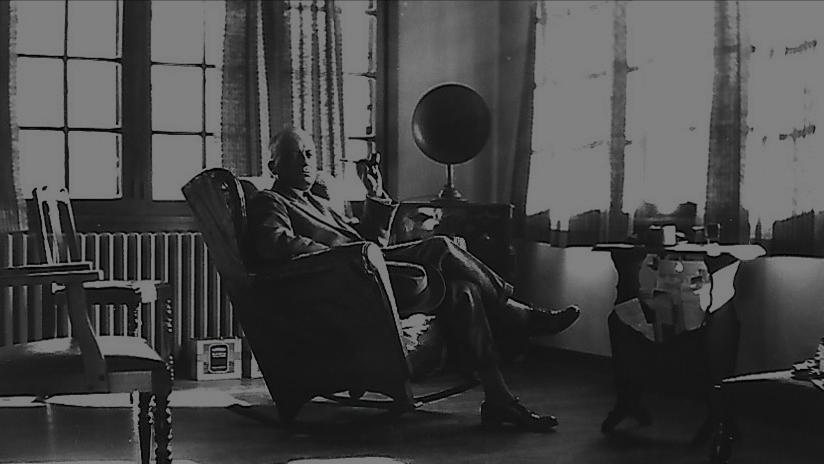

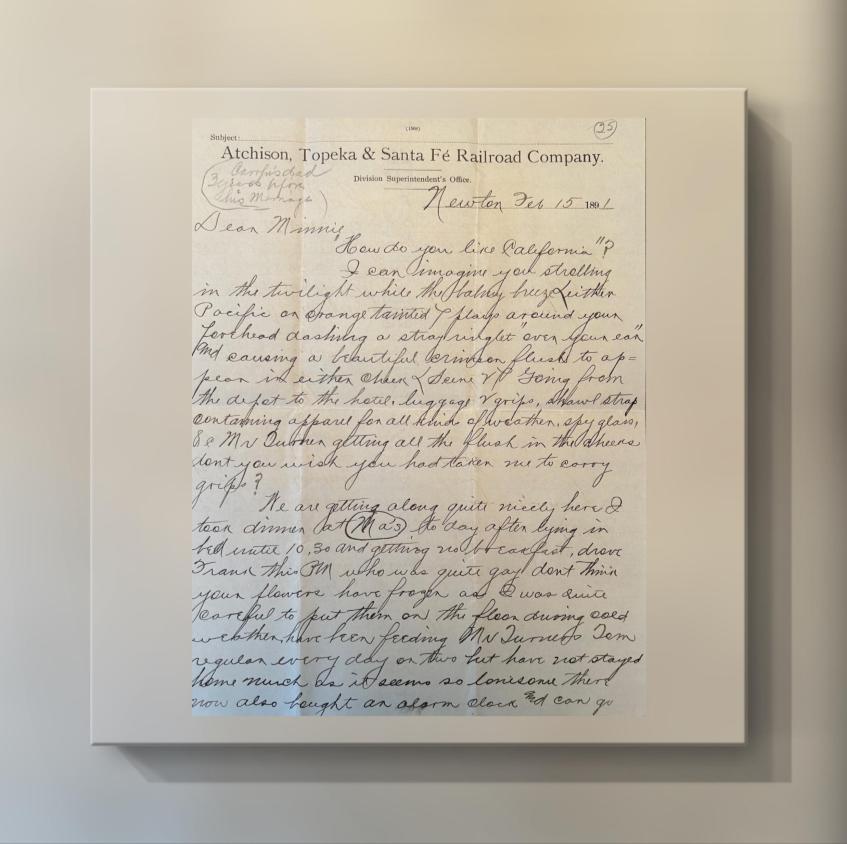







Letter from R. Clarence Ten Eyck to his sister, “Minnie,” one of several recently donated to the University of New Mexico at Albuquerque, Zimmerman Library, and to the Panhandle Plains Historical Museum (1891)


“We are getting along nicely here. I took dinner at Ma’s today …”







Our family wishes to thank the Molly Goodnight Chapter of NSDAR


Historical Museum


Warren Stricker and the Panhandle Plains

Carolyn’s honorarium goes to the Museum in honor of

Warren








Member, National Society, Daughters of the American Revolution since 2010 | Current documented ancestors:

















You can read about the exploits of one of our family’s more famous ancestors, John Honeyman, in the book by Brian Kilmeade and Don Yaeger, “George Washington’s Secret Six,” Sentinel, 2013





Amazon.com








• Copies of this presentation are available on ISSUU @carolyn551 and YouTube @CarolynAppleton



• Ancestry.com, “Appleton, Ten Eyck and Booker Family Tree,” managed by Carolyn M. Appleton (daughter of David Ten Eyck Appleton)





• The Austin Chronicle, “Day Trips: Harvey Houses helped settle the West and were the travelers' best friend for 92 years” (August 27, 2010)


• Brian Kilmeade and Don Yaeger, “George Washington’s Secret Six,” Sentinel, 2013








Railroad Inspector, Amarillo

Library of Congress






• The Library of Congress, Chronicling America and Prints and Photographs Online Catalog (digitized newspapers)




• Newspapers.com (linked to Ancestry.com)

• Rail Talk, “Legend and Legacy: 175 Years of BNSF and Counting,” February 12, 2024 on the website of BNSF Railway





• Texas Historical Commission, Avery and Mary Turner House (Atlas Number 5507016993) historic marker: 1706 Polk Street, Amarillo, Texas




• Texas State Historical Association, Handbook of Texas: 1) Avery Turner; 2) Amarillo, TX; and 3) Pecos and Northern Texas Railway entries especially



• The Portal to Texas History (digital newspapers and more)
• True West Magazine, “Ragtown to Riches” by John Stanley (2014).









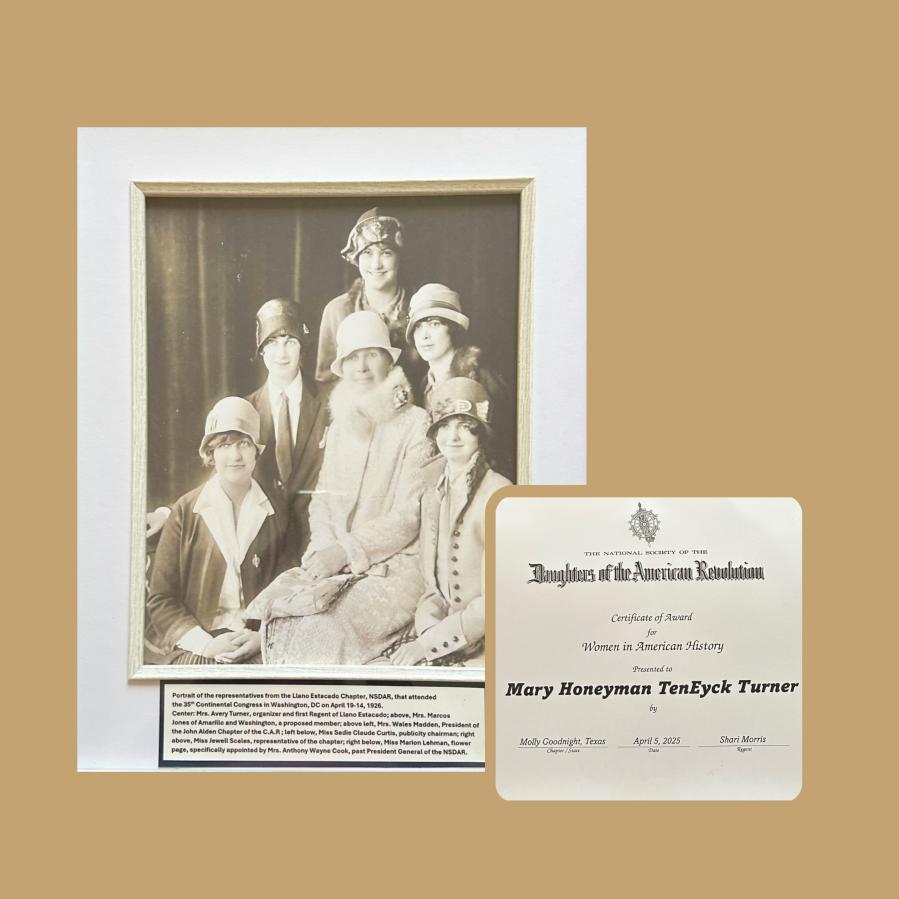














Presented to Mary Honeyman Ten Eyck Turner






Molly Goodnight Chapter, Texas April 5, 2025





Regent Shari Morris


Accepted by Carolyn M. Appleton








carolyn@carolynmappleton.com





